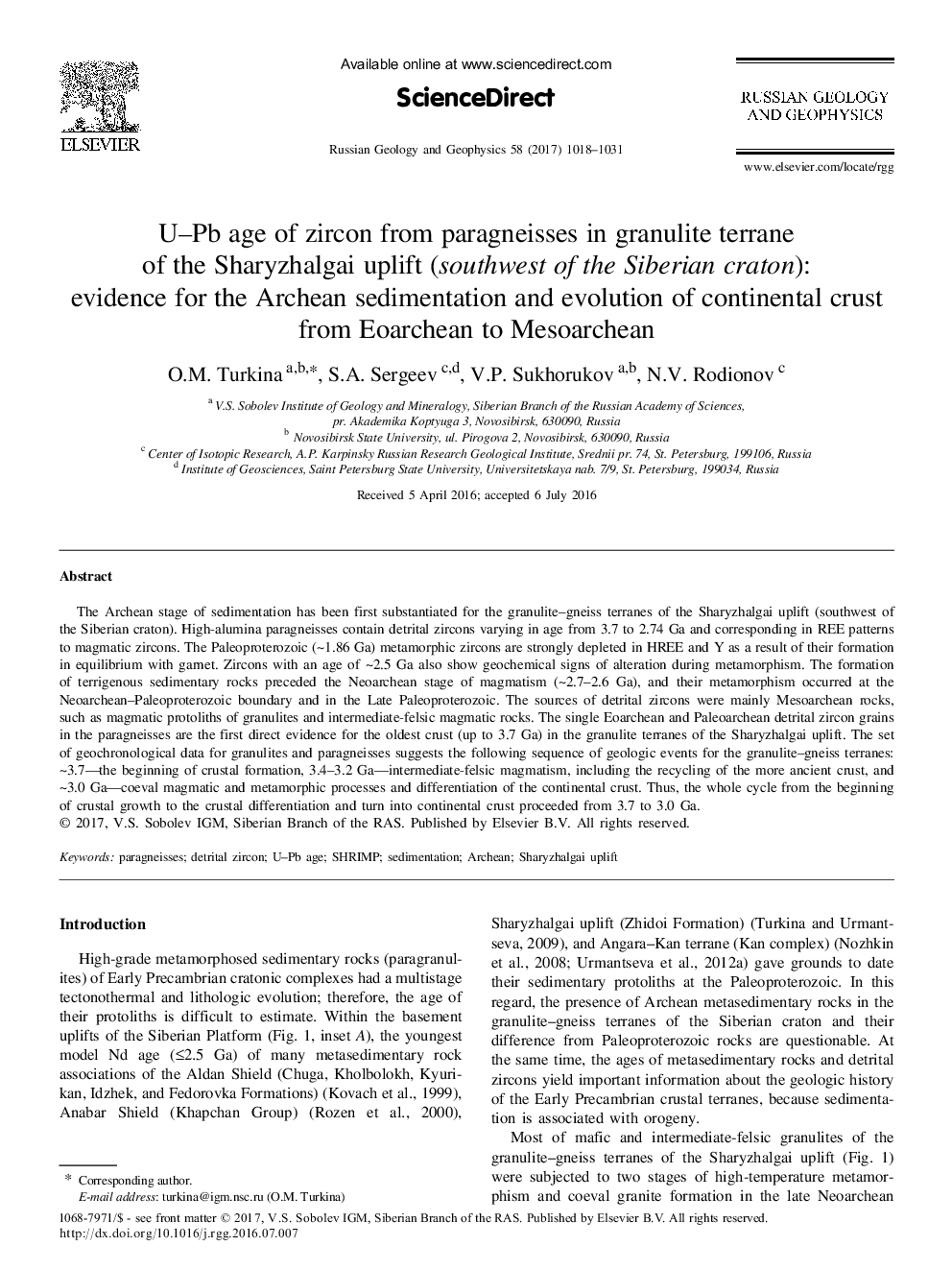| Article ID | Journal | Published Year | Pages | File Type |
|---|---|---|---|---|
| 5786925 | Russian Geology and Geophysics | 2017 | 14 Pages |
Abstract
The Archean stage of sedimentation has been first substantiated for the granulite-gneiss terranes of the Sharyzhalgai uplift (southwest of the Siberian craton). High-alumina paragneisses contain detrital zircons varying in age from 3.7 to 2.74 Ga and corresponding in REE patterns to magmatic zircons. The Paleoproterozoic (~Â 1.86 Ga) metamorphic zircons are strongly depleted in HREE and Y as a result of their formation in equilibrium with garnet. Zircons with an age of ~Â 2.5 Ga also show geochemical signs of alteration during metamorphism. The formation of terrigenous sedimentary rocks preceded the Neoarchean stage of magmatism (~Â 2.7-2.6 Ga), and their metamorphism occurred at the Neoarchean-Paleoproterozoic boundary and in the Late Paleoproterozoic. The sources of detrital zircons were mainly Mesoarchean rocks, such as magmatic protoliths of granulites and intermediate-felsic magmatic rocks. The single Eoarchean and Paleoarchean detrital zircon grains in the paragneisses are the first direct evidence for the oldest crust (up to 3.7 Ga) in the granulite terranes of the Sharyzhalgai uplift. The set of geochronological data for granulites and paragneisses suggests the following sequence of geologic events for the granulite-gneiss terranes: ~Â 3.7-the beginning of crustal formation, 3.4-3.2 Ga-intermediate-felsic magmatism, including the recycling of the more ancient crust, and ~Â 3.0 Ga-coeval magmatic and metamorphic processes and differentiation of the continental crust. Thus, the whole cycle from the beginning of crustal growth to the crustal differentiation and turn into continental crust proceeded from 3.7 to 3.0 Ga.
Related Topics
Physical Sciences and Engineering
Earth and Planetary Sciences
Geology
Authors
O.M. Turkina, S.A. Sergeev, V.P. Sukhorukov, N.V. Rodionov,
